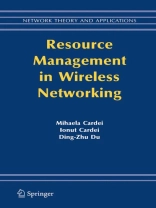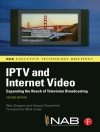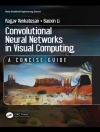Following the pattern of the Internet growth in popularity, started in the early 1990s, the current unprecedented expansion of wireless technology promises to have an even greater effect on how people communicate and interact, with considerable socio-economic impact all over the world. The driving force behind this growth is the remarkable progress in component miniaturization, integration, and also devel- ments in waveforms, coding, and communication protocols. Besides established infrastructurebased wireless networks (cellular, WLAN, sat- lite) ad-hoc wireless networks emerge as a new platform for distributed applications and for personal communication in scenarios where deploying infrastructure is not feasible. In ad-hoc wireless networks, each node is capable of forwarding packets on behalf of other nodes, so that multi-hop paths provide end-to-end connectivity. The increased flexibility and mobility of ad-hoc wireless networks are favored for appli- tions in law enforcement, homeland defense and military. In a world where wireless networks become increasingly interoperable with each other and with the high-speed wired Internet, personal communication systems will transform into universal terminals with instant access to variate content and able of handle demanding tasks, such as multimedia and real-time video. With users roaming between networks, and with wide variation in wireless link quality even in a single domain, the communications terminal must continue to provide a level of Quality of Service that is acceptable to the user and conforms to a contracted Service Level Agreement.
Содержание
Resource Management Architectures.- Qo S for Multimedia Services in Wireless Networks.- Cross-Layer Architectures for Bandwidth Management in Wireless Networks.- Resource Management and Connection Admission Control in Wireless Networks.- Channel Allocation and Scheduling.- Real-Time Guarantees in Wireless Networks.- Fair Real-Time Scheduling over a Wireless LAN.- Inter-Domain Radio Resource Management for Wireless LANs.- High Performance Broadband Wireless Infrastructure Extension Networks.- Truthful Computing in Wireless Networks.- Medium Access Control.- Resource Allocation of Spatial Time Division Multiple Access in Multi-hop Radio Networks.- Qo S Enhancement for the IEEE 802.11e Distributed Wireless LANs.- Time-Domain, Frequency-Domain, and Network Level Resource Management Schemes in Bluetooth Networks.- Energy-Efficient MAC Layer protocols in Ad Hoc Networks.- Routing and Resource Discovery.- Qo S-Based Routing in Wireless Mobile Networks.- Quality of Service Routing in Mobile Ad Hoc Networks.- Topology Management of Hierarchical Mobile Ad Hoc Networks.- Efficient Resource Discovery in Wireless Ad Hoc Networks: Contacts Do Help.- Hybrid Routing Protocols for Mobile Ad-hoc Networks.- Localization in Wireless Ad Hoc Networks.- Broadcast and Multicast.- Energy-Efficient Broadcasting in Wireless Mobile Ad Hoc Networks.- Energy-Efficient Multicast Protocols.- IP3S: a Framework for Power-Conserving Multicast and Broadcast Algorithms in Static Wireless Ad Hoc Networks.- Radio Link and Transport.- Radio Link Protocols for 3G CDMA Systems.- A Survey on Improving TCP Performance over Wireless Networks.












